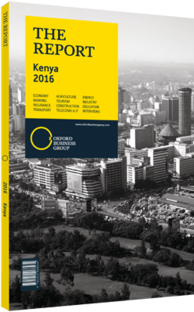Modern technological solutions for Kenyan farmers boosts agricultural output
Mobile technology is increasingly being used to improve smallholder farming across Kenya, as it holds considerable potential to improve operations, reduce weather-related and post-harvest losses, and offers an efficient and transparent means to distribute millions of tonnes of state-subsidised equipment and supplies. Both public and private entities have moved to roll out mobile platforms for the industry in 2015, and although wide-scale adoption is constrained by limited resources and lack of awareness, early successes elsewhere indicate that these programmes could have a dramatic impact on output and incomes.
Farm Innovation
In May 2015 the Ministry of Agriculture, Livestock and Fisheries (MALF) and the country’s largest mobile provider, Safaricom, announced a deal that would launch a simplified system to distribute fertiliser subsidies, called the e-fertiliser subsidy management system (ESMS). Under the electronic voucher scheme, farmers are vetted and their details fed into a database. They are then issued a unique code to receive fertiliser from their local, participating agro-dealer. Safaricom beat 29 other firms to win the KSh60m ($660,000) tender, and is expected to earn millions of shillings in M-Pesa transaction fees and SMS charges from farmers using the system, making it a viable model for the private sector. The goal is to register half a million farmers in the initial roll-out, and if the pilot scheme succeeds, ESMS could eventually provide easier access to subsidies for over 3.5m smallholders, according to MALF.
Also in May 2015, Vodafone announced plans to introduce its Farmer’s Club initiative in Kenya, following a successful launch in Turkey in 2009. The Turkish programme has helped nearly 1.2m farmers improve efficiency and boost both crop yields and farm-gate incomes over the past six years, and there are plans to introduce it in Ghana, Tanzania and India, eventually offering mobile services that include early warning for weather events, information on ideal planting and harvesting times, mobile financial services, and a virtual marketplace where farmers can sell produce.
Technological Benefits
The two programmes offer big benefits to the industry at the local level, raising profits, production and activity. Given the sector’s centrality to Kenya’s economy – providing 24.2% of GDP and employing 75% of the workforce – success with such programmes could underpin state efforts to verify farmer profiles and ease access to services for farmers themselves. State allocations to the Fertiliser and Seed Fund fell from KSh4.5bn ($49.5m) in fiscal year 2014/15 to KSh3bn ($33m) in 2015/16 and will remain flat until 2017/18, making efficient delivery of subsidised inputs critical. Tech-based schemes will help stabilise fertiliser prices and shield farmers from seasonal price fluctuations and food insecurity.
The benefits for farmers are also significant. Citing research on India’s agriculture industry – Vodafone said its mobile services can boost smallholder earnings in Kenya by $128 a year, a sizeable increase for a country where average family incomes are below $4 a day. In all, the firm says farm-gate incomes of over 70m farmers could rise by a collective $9bn through to 2020. Given the success in Turkey and projections for India, a similar impact can be expected in Kenya.
Challenges
The key near-term challenge for these programmes is how to promote their wide-scale adoption. Some stakeholders note that the cost of delivering services to remote areas and a dispersed population winds up being more than many had bargained for. “We have seen a lot of interest in technology and online platforms for farmers, traders and so on, but I do not think any of these initiatives have made a huge contribution so far,” Steve New, director of the Kenya Agricultural Value Chain Enterprises Project, which is funded by USAID, told OBG. “Farms are ready to adopt the technology, but generally somewhere in the chain between the manufacturer and the farmer there is some kind of financial constraint.”
You have reached the limit of premium articles you can view for free.
Choose from the options below to purchase print or digital editions of our Reports. You can also purchase a website subscription giving you unlimited access to all of our Reports online for 12 months.
If you have already purchased this Report or have a website subscription, please login to continue.

